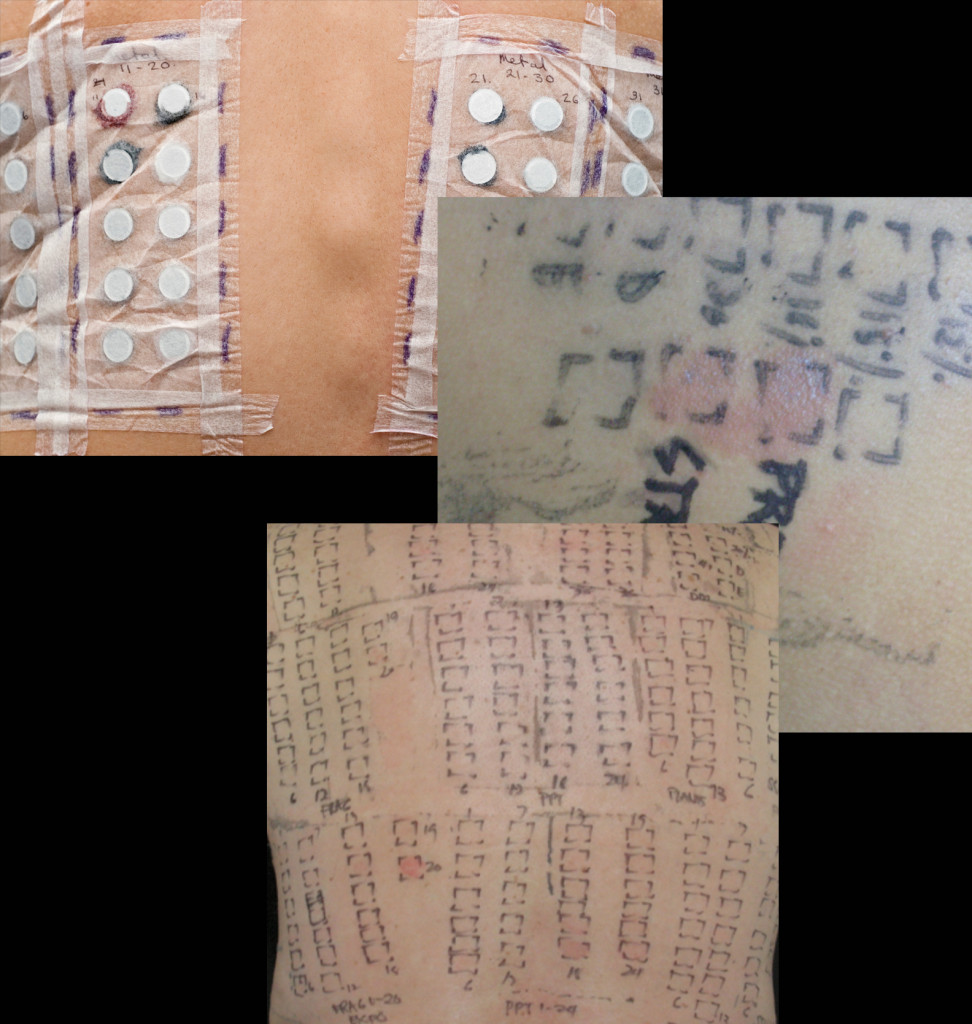Having an allergy patch test is a pretty uncomfortable experience. But it can also be life changing. Chances are, if you’re interested in (or your doctor is recommending) a patch test, you have some unexplainable skin issue that’s not going away so your doctor thinks you may be allergic to something.
What is a patch test?
Our Skintelligencenter has a quick and simple description:
“A patch test is a simple, painless procedure that basically involves:
- Placing a small dollop of select ingredients and other substances such as the most common allergens on a grid (usually made of paper) that is then applied to your back and taped in place.
- You go home and go about your normal business, taking care not to perspire too profusely or to get the patches wet when showering, until you have to come in for your readings.
- Readings are done by your doctor. A “reading” means the doctor opens the patches and “reads” (observes and records) any reactions. Normally, a reading is done at 48 hours and a final reading at 96 hours.
The patch test shows your responses to different ingredients, including allergic responses and irritant responses.
And this is what it looks like:
This grid is taped onto your back to protect it because you have to wait 48 hours before the doctor does a first reading. They then remove the tape and do another reading at 96 hours (still avoiding getting your back wet). Why the long wait, and why twice? With skin allergies (also called contact dermatitis), it takes a bit of time before your skin actually has a complete reaction. At the 48-hour mark, sometimes your skin is just ‘irritated’ but not actually ‘allergic’ (another topic for another day); but then at the 96 hour mark, the doctor can confirm the actual allergic reaction.
When your doctor does a reading they look at the grid, and determine if you had a positive (allergic) or negative (non-allergic) reaction. There are variations to this, so someone may have an extremely positive reaction to one ingredient and a slight reaction to another.
Here’s a real life example:
I am very allergic to cocamidopropyl betaine. If I use shampoos with it, my scalp will flake and itch. On the other hand, I only had a slightly positive reaction to red dye, so in minimal doses (like wearing a red lipstick every now and then) I don’t have a reaction. But when I had a red cellphone case I carried in my hand 24/7, my hands got red, itchy, and even started peeling. So for the severe reaction, I’ll flare up every single time, no matter how little the exposure. For the mild reaction, I probably won’t notice anything amiss unless I use a lot of it or touch something red every single day for a while.
Those are the basics on what a patch test is. Next time, I’ll talk about a few quick tips on actually going through a patch test!
CC is the daughter of VMV Hypoallergenics‘ founding dermatologist-dermatopathologist. Her mom, her sister Laura and Laura’s husband (and, kids!) all work at VMV. CC is frequently at our New York VMV Skin-Specialist Boutique in Soho and is, as her alias suggests, highly allergic!
Have you had a patch test? What are you allergic to?











keto diet dr josh axe